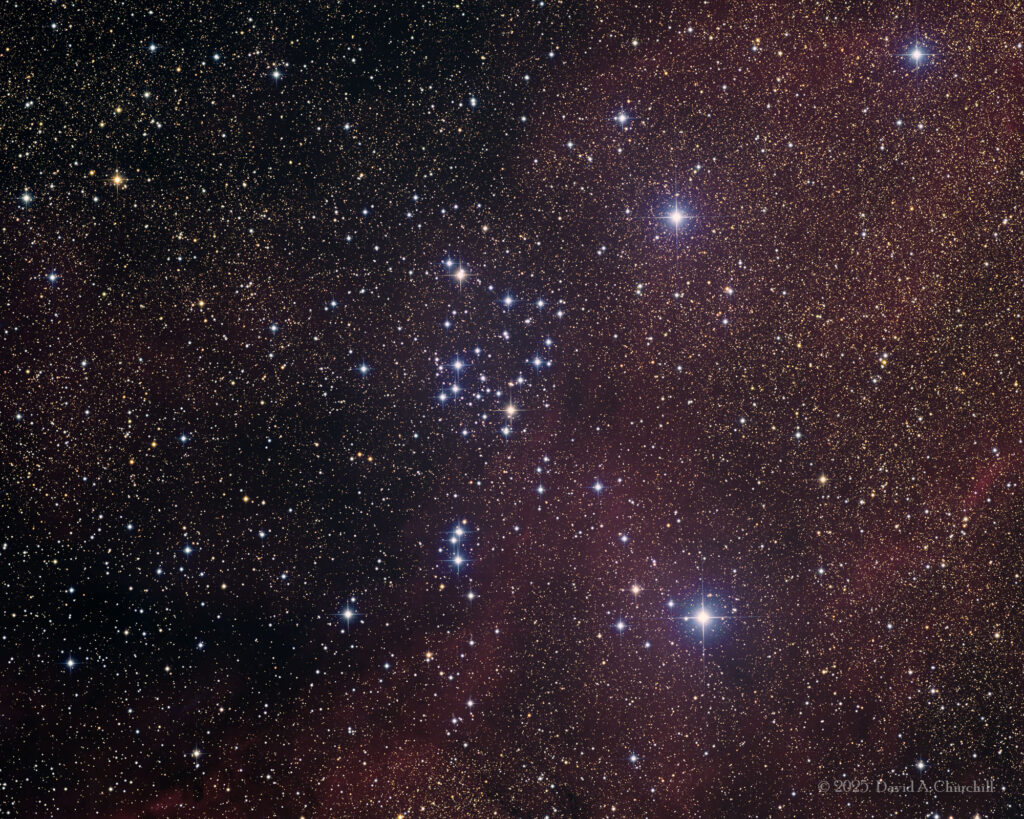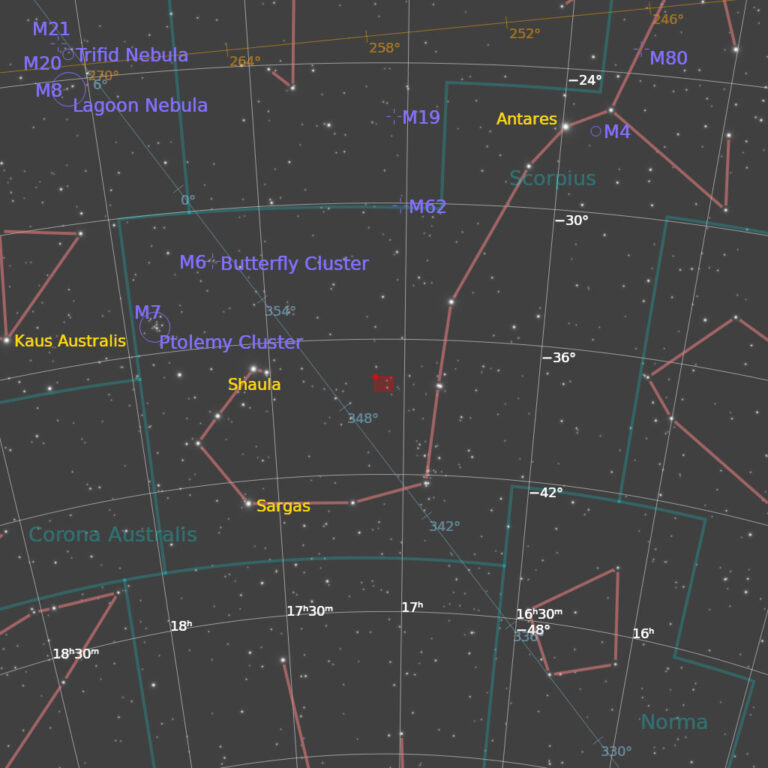NGC 6281 / Sh2-2
Moth Wing Cluster, Open Cluster with adjacent HII Nebula, Scorpius
- Description
- Technical
- Links
NGC 6281 (also informally known as the Moth Wing Cluster) is an open cluster of stars in the constellation Scorpius. It was not included in the Messier or Caldwell catalogues of nebulous objects, but it is the brightest such cluster in the constellation to be left out of both. It is readily observed with the naked eye; it is located about 2° to the east of Mu Scorpii. James Dunlop described the cluster as a “curiously curved line of pretty bright stars, with many stars mixt”. John Herschel then described the cluster as both “pretty bright” and “pretty rich”.
This cluster has a tidal radius of 26 ly (8.0 pc) and a mass of about 214 solar masses. It is classified as a type II2p cluster and has 55 members with a visual magnitude of 13.5 or greater within 20 arcminutes of the center. The brightest member is 9th magnitude. Overall, the cluster has an integrated visual magnitude of 5.4.
To the right of NGC 6281 is part of Sh2-2, also known as Sharpless 2. It is an emission nebula in the constellation of Scorpius. It appears as a mid-range brightness making it difficult to view. It is believed to currently host an X-ray binary star that originated and was ejected from the Scorpius OB1 association. Amateur astronomers can usually see it with a wide field telescope and a hydrogen-alpha filter. The nebulous area is fairly large with an irregular shape appearing as a H II region. The remnant has an apparent diameter that covers approximately 60′.
This cluster has a tidal radius of 26 ly (8.0 pc) and a mass of about 214 solar masses. It is classified as a type II2p cluster and has 55 members with a visual magnitude of 13.5 or greater within 20 arcminutes of the center. The brightest member is 9th magnitude. Overall, the cluster has an integrated visual magnitude of 5.4.
To the right of NGC 6281 is part of Sh2-2, also known as Sharpless 2. It is an emission nebula in the constellation of Scorpius. It appears as a mid-range brightness making it difficult to view. It is believed to currently host an X-ray binary star that originated and was ejected from the Scorpius OB1 association. Amateur astronomers can usually see it with a wide field telescope and a hydrogen-alpha filter. The nebulous area is fairly large with an irregular shape appearing as a H II region. The remnant has an apparent diameter that covers approximately 60′.
Telescope: Planewave CDK17 (FR) f4.5
Mount: Astro Physics 1600GTO
Camera: QHY16200A/ Integral FW
Guider: Agena Starguide II / ZWO ASI178MM
Filters: Astronomik 36mm LRGB
L: 77×10 mins = 770 mins, R: 24×10 mins = 240 mins, G: 24×10 mins = 240 mins, B: 24×10 mins = 240 mins
Total Imaging Time: 24h 50m
Data Imaged remotely on 9 nights during April, 2025.
Imaged from Observatorio El Sauce, Chile, in partnership with Fred Espenak.
Data acquisition & Processing by David Churchill.
None


